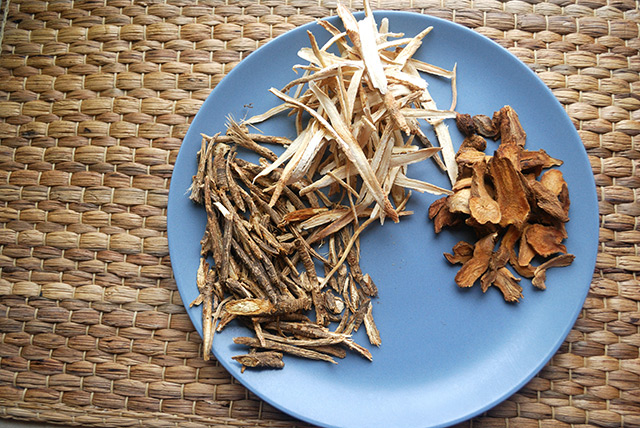
What is shen-fu?
Shen-fu is an herbal preparation comprised of two medicinal herbs commonly used in traditional Chinese medicine (TCM). These herbs are Radix Ginseng Rubra or red ginseng root and Radix Aconiti Lateralis Preparata or the lateral root of aconite. Shen-fu has been used for over two centuries in the treatment of heart diseases like coronary heart disease, myocardial infarction (heart attack), and heart failure in China, Korea, and Japan.
Red ginseng first gained popularity as an effective natural treatment for erectile dysfunction. However, further studies revealed that it could also boost the immune system, help treat diabetes, and improve heart function. Red ginseng contains active compounds called ginsenosides, which have been shown to regulate blood pressure, modify vasomotor function -- contraction and dilation of blood vessels -- and influence ion channels, which are critical for maintaining rhythm and the contractility of the heart muscle.
Aconite, also known as Chinese wolfsbane, is an herb used to dispel excess "cold" from the body. It contains many active components, such as aconitine, mesaconitine, and hypaconitine, which are toxic when not processed properly but can help detoxify the body when converted into their non-toxic derivatives. Aconite also contains higenamine, a compound that can influence the speed and force of contraction of heart muscles (inotropic effect) as well as the heart rate and rhythm (chronotropic effect). Studies suggest that higenamine can improve coronary circulation and reduce the damage caused by acute myocardial ischemia (oxygen deprivation).
Injection of shen-fu can improve blood flow
For their study, the researchers screened patients admitted in the Intensive Care Unit (ICU) of the Affiliated Hospital of Shandong University of Traditional Chinese Medicine from January 1, 2014, to December 31, 2015. They selected 65 cases and assigned them to either the SFI group (33 cases) or the control group (32 cases). They reported that the patients had undergone mainly conventional treatment for septic shock beforehand, which included volume resuscitation (fluids), antibiotics treatment, and vasoactive drugs therapy.
The researchers gave the patients in the SFI group an additional 100 mL of SFI intravenously every 12 hours. They also noted that the pulse indicator continuous cardiac output (PICCO) arterial catheters and vein catheters of all 65 patients were placed within an hour of septic shock diagnosis. They examined the hemodynamic data recorded by these PICCO monitors at 0, 12, and 24 hours after catheter implantation and during early volume resuscitation. (Related: Vitamin C therapy delivers astounding results to septic shock patients.)
At 0 hours, the researchers observed no significant differences between the hemodynamic indices of the two groups. However, after 12 and 24 hours, the hemodynamic indices of the SFI group significantly improved in comparison with the control group. These hemodynamic indices included cardiac index (heart performance), global end-diastolic volume index (blood volume in ventricles), mean arterial pressure, and heart rate. Meanwhile, they detected no significant changes in the amount of fluid accumulated in the lungs between the two groups.
Based on these results, the researchers concluded that SFI could significantly improve hemodynamic indices like CI, GEDI, MAP, and HR in septic shock patients who have already undergone early volume resuscitation.
Sources include:
Please contact us for more information.























